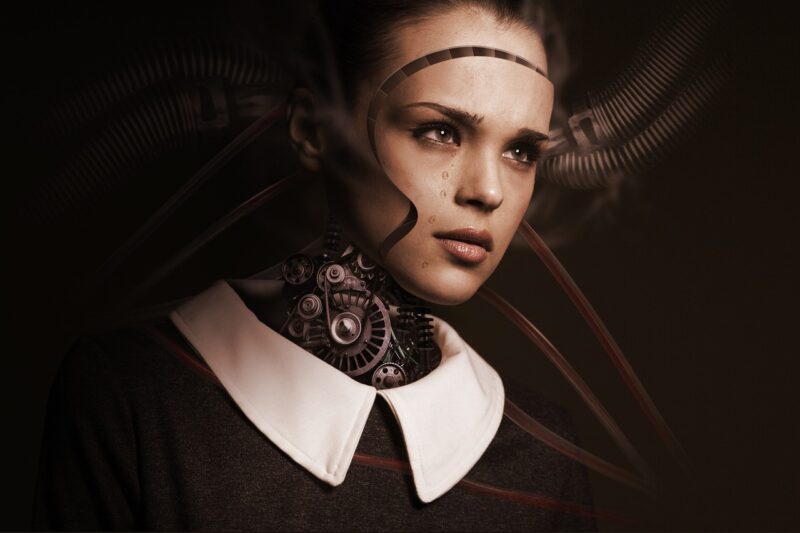The Rise of Generative AI: How Machines Are Learning to Create Art, Music, and Literature
November 11, 2024

As we stand on the threshold of the fourth industrial revolution, the capabilities of artificial intelligence (AI) are evolving at an unprecedented pace. One of the most exciting developments in this field is generative AI, a subset of artificial intelligence designed to create content—be it art, music, or literature. This now allows machines to perform creative tasks traditionally reserved for humans, challenging our understanding of creativity itself. In this article, we will explore how generative AI works, its applications, the implications for human creativity, and the future of art, music, and literature in a world increasingly influenced by AI.
1. What is Generative AI?
Generative AI refers to algorithms capable of generating new content that resembles a given training dataset. Unlike traditional AI, which is designed to recognize patterns and make decisions based on data, generative AI learns from data sets to create something original.
Some of the popular techniques used in generative AI include:
- Generative Adversarial Networks (GANs): GANs consist of two neural networks—the generator and the discriminator—competing against each other to produce realistic content.
- Variational Autoencoders (VAEs): VAEs learn to encode data distributions, enabling them to generate new, similar content based on learned representations.
- Recurrent Neural Networks (RNNs): RNNs are often employed in generating text or music by predicting the next element based on previous ones, maintaining a context over sequences.
These methods allow AI to produce content that can often be indistinguishable from that created by humans, leading to a new frontier in creative expression.
2. Generative AI in Art
The art world has witnessed the profound impact of generative AI, with algorithms capable of producing breathtaking visuals. Artists and technologists are collaborating to explore new creative avenues, utilizing generative AI to complement traditional techniques.
Notable examples include:
- DeepArt: This platform uses neural networks to transform photographs into artworks inspired by famous styles, allowing users to create art reminiscent of Van Gogh, Picasso, and more.
- Obvious Art: This collective made headlines when their AI-generated artwork “Edmond de Belamy” sold at auction for $432,500, demonstrating the market’s growing acceptance of AI-created art.
- Creative Adversarial Networks (CANs): These networks actively collaborate with human artists to generate innovative artworks, blurring the lines between human and machine creativity.
Generative AI not only produces standalone pieces of art but also serves as a dynamic tool that inspires human artists, allowing for exploration of styles and inspirations that may not have been possible before.
3. Generative AI in Music
In the music industry, generative AI is reshaping how we think about composition and creativity. Various AI applications can now create melodies, harmonies, and rhythms that listeners find captivating.
Some noteworthy contributions include:
- OpenAI’s MuseNet: This AI can generate complex musical compositions across multiple genres, combining influences from classical to contemporary music styles.
- AIVA (Artificial Intelligence Virtual Artist): AIVA composes original soundtracks for films and video games, producing pieces that demonstrate emotional depth and creativity.
- Amper Music: This platform allows users to quickly create and customize original music tracks without needing deep musical knowledge, streamlining the creative process for content creators.
As excited listeners embrace AI-generated music, artists are finding new genres and ways to collaborate with AI, opening doors to endless creative possibilities.
4. Generative AI in Literature
The realm of literature is also experiencing the rise of generative AI, with algorithms capable of producing poetry, short stories, and even novels. AI’s ability to analyze complex language patterns allows it to create coherent and engaging narratives.
Key players in this space include:
- OpenAI’s GPT-3: Known for its impressive ability to generate human-like text, GPT-3 can produce everything from poetry to fictional narratives, brilliantly mimicking different writing styles and voices.
- Natasha, the AI Writer: This AI has co-authored novels with human writers, serving as a brainstorming partner and collaborating creatively throughout the writing process.
- Botnik Studios: This collective uses predictive text technology to write humorous and surreal pieces of literature, often blending familiar tropes in imaginative ways.
As these technologies continue to evolve, the lines between human-authored and machine-created literature will blur, raising questions about authorship, creativity, and the definition of literature itself.
5. The Implications of Generative AI on Creativity
As generative AI becomes increasingly sophisticated, it sparks vital discussions about the nature of creativity and the role of the artist. Here are some key implications:
- Democratization of Creativity: With AI-generated tools, individuals without formal training can create art, music, or engage in creative writing, giving rise to untapped talent and innovative expressions.
- Redefining Authorship: The question of what it means to be an author is evolving, as AI-generated works challenge traditional notions about originality and creative ownership.
- Collaboration over Competition: Rather than replacing human creativity, generative AI can serve as a collaborator, expanding the creative arsenal for artists and musicians and leading to groundbreaking works.
While there are undoubtedly challenges facing the artistic community, the potential for collaboration between human creators and AI also opens up exhilarating new pathways for creativity.
6. The Future of Generative AI and Creativity
Looking ahead, the influence of generative AI on creative fields will continue to grow. Some possible directions include:
- Integration in Creative Workflows: Generative AI can become a staple in the creative process, functioning as a co-pilot for artists and musicians, guiding their journey while fostering innovation.
- New Genres and Forms of Expression: The collaboration between human and AI can lead to entirely new artistic genres, stretching the boundaries of creativity and imagination.
- Ethical Considerations: As generative AI becomes more prevalent, society will need to grapple with questions surrounding copyright, representation, and the potential replacement of human artists.
Understanding these implications will be crucial for cultivating a healthy collaboration between technology and creativity.
Conclusion
The rise of generative AI signifies a paradigm shift in how we view creativity, art, music, and literature. As machines enhance their ability to create, lines continue to blur between man-made and machine-made content. However, rather than a threat, generative AI offers unique opportunities for collaboration, innovation, and the democratization of creative expression. By embracing these technologies, society can redefine what it means to be creative in the 21st century, navigating the complexities of a world where AI and human ingenuity coexist harmoniously.






